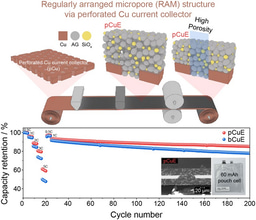The LEANORA study: Understanding the pharmacokinetics and pharmacogenomics of ribociclib in Black women
Published in Cancer and Biomedical Research
Breast cancer is the most common type of cancer and the second most common cause of cancer-related mortality in the United States (1). Advances in our understanding of the molecular underpinning of breast cancer and targeted therapies have led to improved survival rates. Advances in genetic testing to understand the risk of breast cancer and tumor biology have allowed clinicians to provide a more personalized treatment for patients with breast cancer. Pharmacogenomics, or the use of genetics to guide medication therapy, may be able to improve the likelihood of safe and effective care for patients with breast cancer.
For example, in LEANORA, we sought to understand if genetic testing could predict the degree of exposure to ribociclib (area-under-the-curve [AUC]), a medication commonly used to treat patients with hormone receptor-positive (HR+) breast cancer (2). Ribociclib AUC is important because elevated AUC is associated with increased toxicities (e.g., neutropenia, QT prolongation), but the therapeutic threshold for effectiveness is not well established (3). The FDA label states drugs that inhibit CYP3A could increase ribociclib exposure and thereby recommends a dose reduction or avoiding the drug interaction. This study asked what happens to ribociclib AUC if a patient has a different CYP3A enzyme function as predicted by their genetics.
Prior trials may have missed this signal due to a lack of inclusion of diverse populations. Trials evaluating ribociclib had limited representation of minority population (4). For example, in the phase III studies that led to the approval of ribociclib in the metastatic setting, only 41 of 2,066 (< 2%) patients identified as Black (5, 6, 7). The lack of diverse representation in these studies is significant as there are differences by genetic ancestry in the enzymes, CYP3A5 in particular, that metabolize this drug. Approximately 85% of people of African ancestry are normal or intermediate metabolizers of CYP3A5 (8, 9, 10). In contrast, 85% of those of European ancestry where are CYP3A5-poor metabolizers (10). Race, genetic ancestry, and CYP3A5 genotype are distinct concepts and often not correlated, so an intentional study was needed. Before this study, it was unknown if polymorphisms in the CYP3A5 gene impact ribociclib exposure.
In the prospective, multicenter LEANORA cohort study (NCT04657679), we assessed the pharmacokinetics and pharmacogenomics of ribociclib in 14 Black women with previously untreated HR+ metastatic or locally advanced breast cancer. Despite the small sample, this is a well-powered trial for this pharmacokinetic question. Ultimately, we found no association between CYP3A5genotype and ribociclib exposure or toxicity. This suggests that CYP3A5 screening may not be necessary for determining ribociclib safety, though larger trials could provide more insights into individual responses. The findings are of significant interest as ribociclib was recently approved for the treatment of patients with early-stage disease, and the use of this agent is likely to expand to more patients.
This trial is notable for being the largest cohort of ribociclib pharmacokinetic data in Black participants, addressing an underrepresented population in clinical research. While the study had strengths in its design, including robust sample collection, limitations such as the small sample size for secondary analyses and the lack of long-term data were noted. The trial emphasizes the importance of including diverse populations in clinical studies to ensure equitable treatment outcomes and accurate applicability across different genetic ancestries.
Although this association was not significant, there is a potential for the application of pharmacogenomics in oncology to improve the care of patients with breast cancer. There is current evidence available supporting clinically relevant pharmacogenomic associations for drugs utilized for cancer treatment (e.g., capecitabine), supportive care (e.g., opioids, NSAIDs, SSRIs, antiemetics), and survivorship (e.g., statins) (https://cpicpgx.org/guidelines/). More work is needed to identify new pharmacogenomic associations that affect patient care and to find optimal approaches to integrate established pharmacogenomic associations into care.
References
- Siegel RL, Giaquinto AN, Jemal A. Cancer statistics, 2024. CA Cancer J Clin. 2024;74(1):12-49.
- DeSantis C, Siegel R, Bandi P, Jemal A. Breast cancer statistics, 2011. CA Cancer J Clin. 2011;61(6):409-18.
- INFORMATION FHOP, https://www.novartis.com/us-en/sites/novartis_us/files/kisqali.pdfThdniatintuKsaeSfpifK.
- Hurd TC, Kaplan CD, Cook ED, Chilton JA, Lytton JS, Hawk ET, et al. Building trust and diversity in patient-centered oncology clinical trials: An integrated model. Clin Trials. 2017;14(2):170-9.
- Slamon DJ, Neven P, Chia S, Jerusalem G, De Laurentiis M, Im S, et al. Ribociclib plus fulvestrant for postmenopausal women with hormone receptor-positive, human epidermal growth factor receptor 2-negative advanced breast cancer in the phase III randomized MONALEESA-3 trial: updated overall survival. Ann Oncol. 2021;32(8):1015-24.
- Lu YS, Im SA, Colleoni M, Franke F, Bardia A, Cardoso F, et al. Updated Overall Survival of Ribociclib plus Endocrine Therapy versus Endocrine Therapy Alone in Pre- and Perimenopausal Patients with HR+/HER2- Advanced Breast Cancer in MONALEESA-7: A Phase III Randomized Clinical Trial. Clin Cancer Res. 2022;28(5):851-9.
- Hortobagyi GN, Stemmer SM, Burris HA, Yap YS, Sonke GS, Paluch-Shimon S, et al. Updated results from MONALEESA-2, a phase III trial of first-line ribociclib plus letrozole versus placebo plus letrozole in hormone receptor-positive, HER2-negative advanced breast cancer. Ann Oncol. 2018;29(7):1541-7.
- Feero WG, Steiner RD, Slavotinek A, Faial T, Bamshad MJ, Austin J, et al. Guidance on Use of Race, Ethnicity, and Geographic Origin as Proxies for Genetic Ancestry Groups in Biomedical Publications. JAMA. 2024.
- Beermann KJ, Ellis MJ, Sudan DL, Harris MT. Tacrolimus dose requirements in African-American and Caucasian kidney transplant recipients on mycophenolate and prednisone. Clin Transplant. 2014;28(7):762-7.
- Birdwell KA, Decker B, Barbarino JM, Peterson JF, Stein CM, Sadee W, et al. Clinical Pharmacogenetics Implementation Consortium (CPIC) Guidelines for CYP3A5 Genotype and Tacrolimus Dosing. Clin Pharmacol Ther. 2015;98(1):19-24.
Follow the Topic
-
npj Breast Cancer

This journal publishes original research articles, reviews, brief communications, matters arising, meeting reports and hypothesis generating observations which could be unexplained or preliminary findings from experiments, novel ideas or the framing of new questions that need to be solved.
Related Collections
With Collections, you can get published faster and increase your visibility.
Rare breast cancer subtypes
Publishing Model: Open Access
Deadline: Mar 24, 2026
Advances and challenges in the use of PARP inhibitors in breast cancer
Publishing Model: Open Access
Deadline: Feb 28, 2026




Please sign in or register for FREE
If you are a registered user on Research Communities by Springer Nature, please sign in